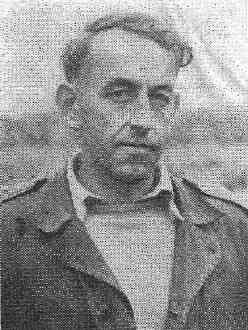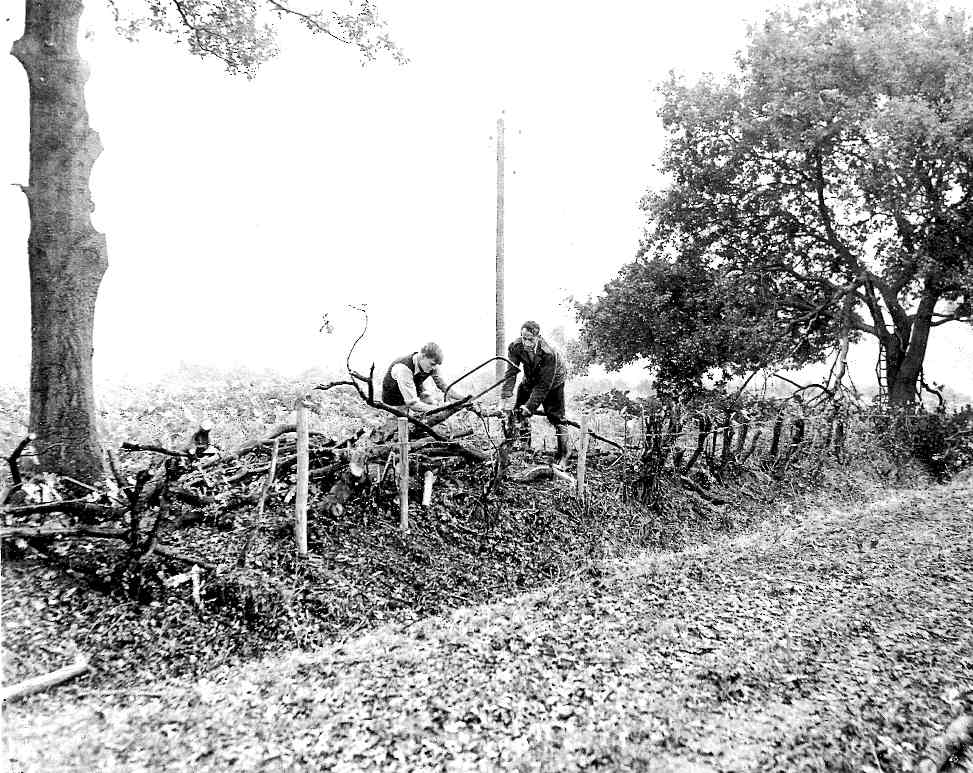
|
Arborfield
|
|
Families
Related sites:
|
MR. E. A. RECORD OF ARBORFIELD The Government White Paper on Small Farmers (with big capital letters) suggests a man such as Mr. E. A. Record, of Targetts Farm, Arborfield, as a typical example of this much-talked-of section of the agricultural community. The main scheme of the Whitehall proposals for assisting small farmers undertakes to provide finance to improve the earning capacity of farming businesses between 20 and 100 acres, so long as they also satisfy an economic test.
When, almost three years ago, the Berks A.E.C. walked Targetts Farm, with fodder production in mind, the holding was but 28 acres; since then another few acres have been bought by the landlord, and that inclusion has meant for the tenant a simplification of an extremely awkward lay-out; it has made, roughly speaking, a rectangle out of a geometrical pattern that would have foxed Euclid. This is no case of ‘farming in the blood’. Young Tony Record had an office job originally, then came the war and service in the Royal Air Force, and a long spell as a prisoner-of-war. When uniform was eventually cast off, the problem of what to do resolved itself in the decision (as in so many other instances) to go on the land, as a healthy and satisfying alternative to an office stool. After a period of apprenticeship on Dean's Farm, Caversham, he took on five little acres at Woodcote and came to Targetts' then 28 acres, about five years ago. It was all grass and, except for one field, of low quality. With the plough and fertilisers, productive leys were brought into being, enabling more stock to be kept. Taking advantage of N.A.A.S. advice and Government grants (particularly in respect of an £80 concrete silage apron) Tony Record has shown what the little man can do with a little encouragement. The wet nature of the land has been – and still is - a problem, but an ambitious drainage scheme is being planned (with the prospect of a grant) and, when completed, gum boots should be a little less necessary. A ditch of about 60 chains long is, one gathers, contemplated.Overgrown hedges are being drastically trimmed (with due respect for good specimens of hedgerow timber) and the additional light and air should reduce wasteful headlands for which there is no room on a farm of this size. Guernseys were the cattle here but they are being replaced by Ayrshires, a breed which it is now thought will be more suited to the land than the Channel Islanders. A.I. is used, and Angus semen is also called for with a view to beef calves. Landrace and Landrace crosses produce baconers, and there are about 200 poultry on deep litter, eggs being sold at the farm gate. Milk, bacon and eggs - plus a certain amount of contract work - are not making a fortune for the tenant of Targetts Farm but they represent an economic proposition. It's hard work, of course. The only help is that of 16-years-old Michael Brown, a village boy who is a reliable and steady worker. For the boss it’s a job that knows no hours, a job in which the working week consists of seven days.
'Overgrown hedges . . . drastically trimmed'. With acknowledgements to Berkshire Media for the transcript of the article, and for the use of copyright photographs.
|
| |
|
Any Feedback or comments on this website? Please e-mail the webmaster |

 Ernest
Atkin Record - Tony to his family and others - is one of the thousand or so
farmers in Berkshire who live on 5-50 acres, and he is one of those small
producers who rely on milk, pigs and eggs - the products which have borne the
main impact of the cost/price squeeze at successive price reviews. With his 35
acres he is the smallest farmer so far to take his place in this series,
contrasting with, at the other extreme, Rex Paterson, who farms a total of 8,000
acres.
Ernest
Atkin Record - Tony to his family and others - is one of the thousand or so
farmers in Berkshire who live on 5-50 acres, and he is one of those small
producers who rely on milk, pigs and eggs - the products which have borne the
main impact of the cost/price squeeze at successive price reviews. With his 35
acres he is the smallest farmer so far to take his place in this series,
contrasting with, at the other extreme, Rex Paterson, who farms a total of 8,000
acres. 